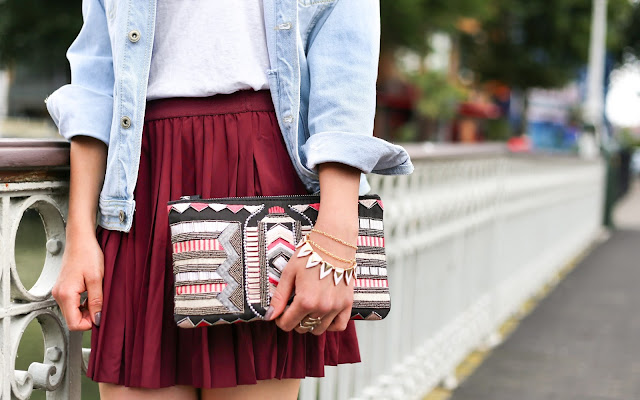Patterns are very popular right now. Just take a look at the runways and you'll be swept away by how good they look. However, mixing patterns is not something everyone finds attractive, but those who do simply carry it as though they were born with it. Fashionistas often like to emphasise that patterns are more appealing for those with dramatic styles.
Nevertheless, even if it’s not your style, consider trying it out. It’s
a great way to create diversity in your clothing. In addition, it will make
your combinations personal and help you create your own individualised style.
Therefore, in order to do it right and not create disastrous outfits, here are
some tips for how to keep it fashionably amazing.
The scale of the patterns
When it comes to patterns, it’s all about balance. Therefore, if you mix smaller
with larger patterns you will create harmony. This will bring balance to your outfit and you
won't have to worry that you’ve made a mistake. For example, pairing up a white
blouse with thin black stripes and a black skirt with floral motifs, you will
create a sensible and balanced look. Adding simple black flats will give you an
outfit you can wear on several occasions, even work if it's suitable.
Use patterns of the same colours
To avoid being
too colourful,
use the same shades of patterns on your whole outfit. For example, if your top
is beige, green and blue, you should wear the bottom with some of those shades,
too. Of course, you don’t have to wear the exact colours, but shades of them.
That will help you avoid tackiness. For example, a white shirt with splashes of
red and blue will go great with a paisley patterned skirt including the same
colours. The perfect way to separate the two would be with a black belt.
When to use a solid colour
It’s good to use a solid colour to break the patterns. This will make
your outfit trendier and more balanced. Adding Palmaira sandals, a Benetton belt or Zara scarf in a basic and
solid colour can help you calm down the patterns while still looking modern. If
you are not overly confident to wear patterns, try this trick with adding the
basic colour. It will be more subtle to wear and will give you confidence to
try out new combinations.
Black and white stripes
Black and
white stripes
are probably the only exception which can be matched with any other pattern. If
you're not sure that you'll be able to create an appropriate combination,
choose stripes. Besides black, you can also choose brown, grey or navy blue
with white. Stripes are simple, but you can have a lot of fun with them, too.
For example, three-way stripes on an A-line skirt can flatter your figure and
turn the pattern into a more interesting combination.
You can even go minimal with the stripes. There isn't a rule which says
that striped patterns have to have many lines. The stripes can actually be so
minimal, that they resemble decorations. For example, a white line around the
bottom and neckline of a navy blue dress can be an elegant addition.
Don’t use the same patterns head to
toe
Wearing identical patterns on all your pieces of clothing is not good
for your fashion sense. It is boring and uncreative. The most common mistake of
this type is done with polka dots. Being dressed in the same polka dot
combination even if it’s a one-piece garment is still a fashion mishap.
Although it may tell the story of a very fashionably confident individual,
unfortunately, it’s too uneventful to look at. Different
patterns create
not only diversity but also an interesting and exciting outfit.
Finally
Patterns usually have two sides. One that helps you create an exciting
and interesting look and the other which can spoil the outfit. However, even
though it may seem difficult, using patterns is easy if you follow these simple
rules. Be bold and discover a completely new patterned fashion by experimenting
and trying out different looks to find which ones suit you best.
A guest post written by Helen Bradford
A guest post written by Helen Bradford






0 Comments